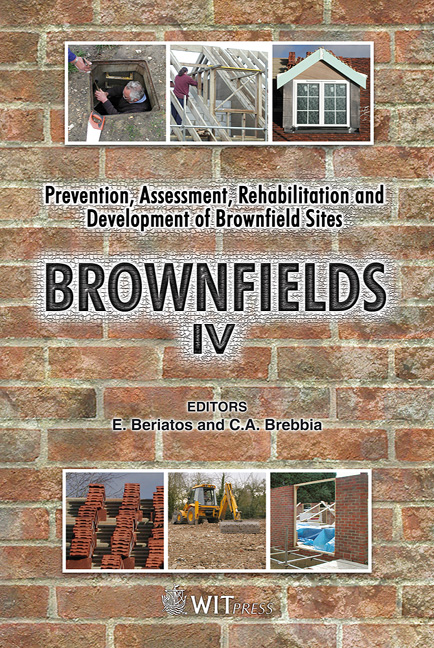Bridging Mining Theory With Soil Remediation
Price
Free (open access)
Transaction
Volume
107
Pages
10
Page Range
93 - 102
Published
2008
Size
752 kb
Paper DOI
10.2495/BF080091
Copyright
WIT Press
Author(s)
T. Karachaliou & D. Kaliampakos
Abstract
Soil contamination has been a major problem all over the world posing great risks to human health and the environment. Currently there are many remedial alternatives that can be applied, yet the available funds are not enough to entirely face the problem. The optimal use of the available resources by maximising their environmental benefits is of great interest. With this aim in mind, a method based on mining theory is proposed in this paper. The core idea is contamination to be treated as a \“negative” ore. The meaning of \“negative” is attributed to the fact that contamination, contrary to the ore, is an unwanted asset. In this case, what is actually waste is considered valuable. However, the rationale is the same since in both cases the profit is proportional to the grade of the extracted ore or the concentration of the removed contaminant. This approach enables the use of pit optimisation tools such as the Floating Cone method suitably developed to be implemented in soil remediation. The main problem to overcome seems to be the absence of an economic value attributed to the removal of contamination. The paper also introduces a method to define a shadow price in order to compare the profit of contaminated soil removal to the corresponding total cost of this action. As a case study, the method is applied in a contaminated site in Lavrion, Greece. Keywords: soil remediation, environmental risk, block modelling, pit optimisation. 1 Introduction During recent decades the modern world has been increasingly concerned about contaminated land. The problem of soil contamination seems to be expanding since new brownfield sites are discovered at every turn, whereas the available funds remain inadequate to rehabilitate them all. According to some estimates,
Keywords
soil remediation, environmental risk, block modelling, pit optimisation.




